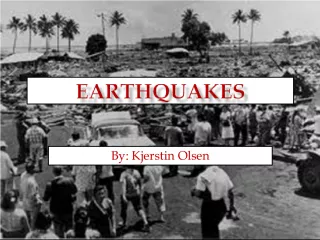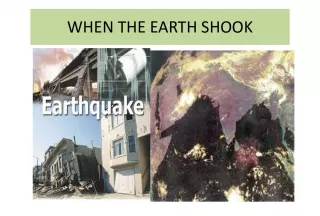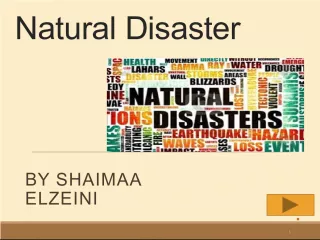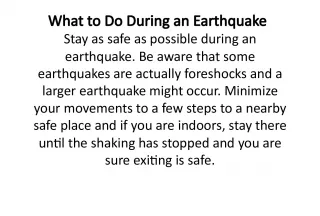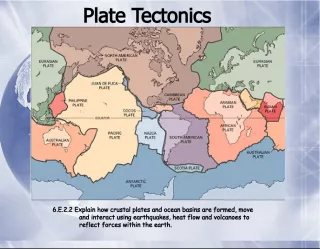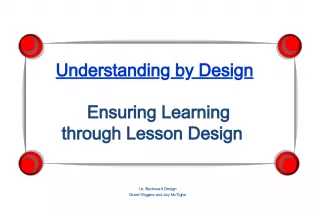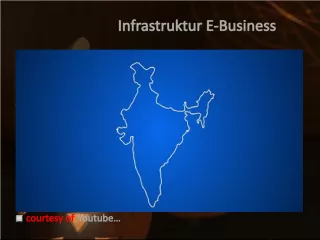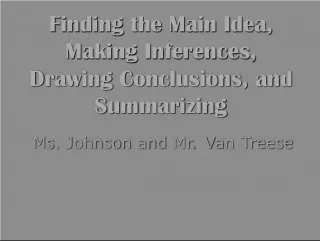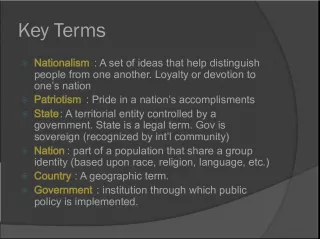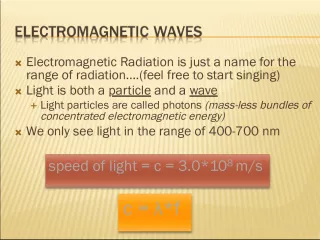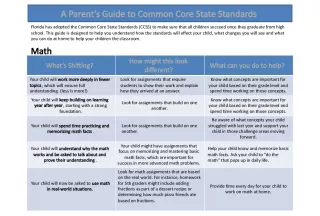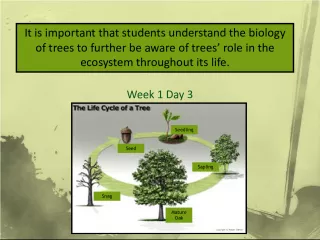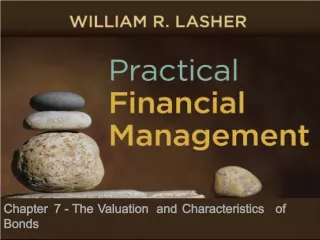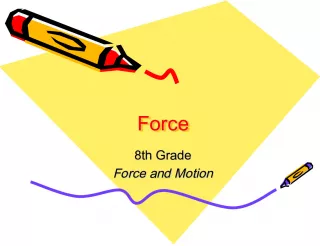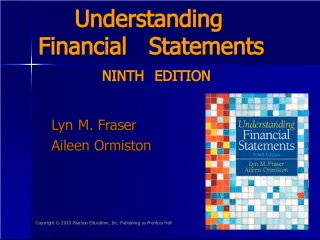Understanding Earthquakes
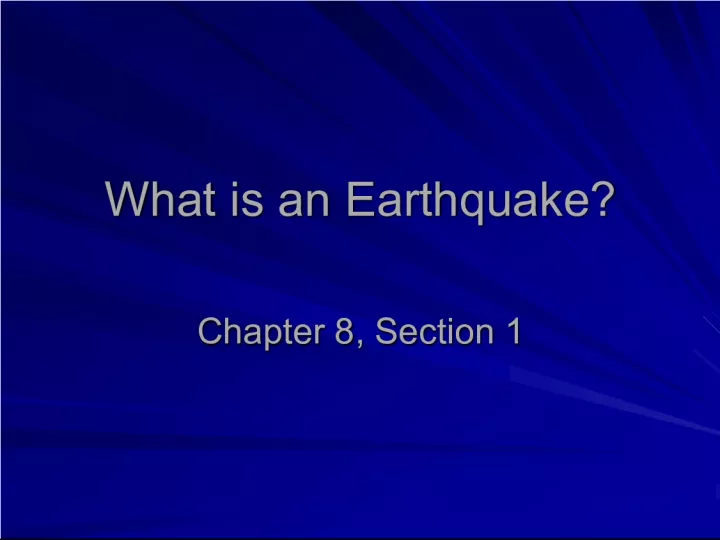

This chapter provides an explanation of what earthquakes are, how they are caused, and the different terminology associated with them, including focus, epicenter, and faults.
- Uploaded on | 2 Views
-
 franciele
franciele
About Understanding Earthquakes
PowerPoint presentation about 'Understanding Earthquakes'. This presentation describes the topic on This chapter provides an explanation of what earthquakes are, how they are caused, and the different terminology associated with them, including focus, epicenter, and faults.. The key topics included in this slideshow are . Download this presentation absolutely free.
Presentation Transcript
1. What is an Earthquake? What is an Earthquake? Chapter 8, Section 1 Chapter 8, Section 1
2. Earthquakes Earthquakes Earthquake – vibration of Earth produced by the rapid release of energy Earthquake – vibration of Earth produced by the rapid release of energy Focus – the point within Earth where the earthquake starts Focus – the point within Earth where the earthquake starts The released energy radiates in all directions from the focus in the form of waves The released energy radiates in all directions from the focus in the form of waves Epicenter – the location on Earth’s surface directly above the focus Epicenter – the location on Earth’s surface directly above the focus Earthquakes are usually associated with large fractures in Earth’s crust and mantle called faults Earthquakes are usually associated with large fractures in Earth’s crust and mantle called faults Fault – fractures in Earth where movement has occurred Fault – fractures in Earth where movement has occurred
3. Earthquakes Earthquakes
4. Concept Check Concept Check What is a fault? What is a fault? A fault is a fracture in Earth where movement has occurred. A fault is a fracture in Earth where movement has occurred.
5. Cause of Earthquakes Cause of Earthquakes Forces within Earth slowly deform the crustal rocks on both sides of a fault, seen by the bending of the rocks Forces within Earth slowly deform the crustal rocks on both sides of a fault, seen by the bending of the rocks Eventually, the resistance caused by the internal friction holding the rocks together is overcome Eventually, the resistance caused by the internal friction holding the rocks together is overcome The rocks slip at their weakest point (the focus) The rocks slip at their weakest point (the focus) This small movement causes other areas along the fault to slip, until most of the built-up energy is released This small movement causes other areas along the fault to slip, until most of the built-up energy is released The slippage allows the deformed rock to return to its original form. The slippage allows the deformed rock to return to its original form. The earthquake occurs as the rock elastically returns almost to its original shape The earthquake occurs as the rock elastically returns almost to its original shape
6. Elastic Rebound Hypothesis Elastic Rebound Hypothesis Elastic Rebound Hypothesis – most earthquakes are produced by the rapid release of elastic energy stored in rock that has been subjected to great forces. When the strength of the rock is exceeded, it suddenly breaks, causing the vibrations of an earthquake Elastic Rebound Hypothesis – most earthquakes are produced by the rapid release of elastic energy stored in rock that has been subjected to great forces. When the strength of the rock is exceeded, it suddenly breaks, causing the vibrations of an earthquake Earthquakes most often happen along existing faults, and occur when the frictional forces on the fault surface are overcome Earthquakes most often happen along existing faults, and occur when the frictional forces on the fault surface are overcome
7. Elastic Rebound Hypothesis Elastic Rebound Hypothesis
8. Aftershocks and Foreshocks Aftershocks and Foreshocks Most of the movement along a fault occurs during the main earthquake, however additional movement may occur before and after along this fault and adjoining faults Most of the movement along a fault occurs during the main earthquake, however additional movement may occur before and after along this fault and adjoining faults Aftershocks – smaller earthquakes that occur as a result of movements along the fault after a major earthquake Aftershocks – smaller earthquakes that occur as a result of movements along the fault after a major earthquake Foreshocks – small earthquakes that often come before a major earthquake Foreshocks – small earthquakes that often come before a major earthquake
9. Aftershocks and Foreshocks Aftershocks and Foreshocks Aftershocks as a result of November 15, 2006 earthquake off the coast of Japan
10. Assignment Assignment Read Chapter 8, Section 1 (pg. 218-221) Read Chapter 8, Section 1 (pg. 218-221) Do 8.1 Assessment #1-9 (pg. 221) Do 8.1 Assessment #1-9 (pg. 221)
